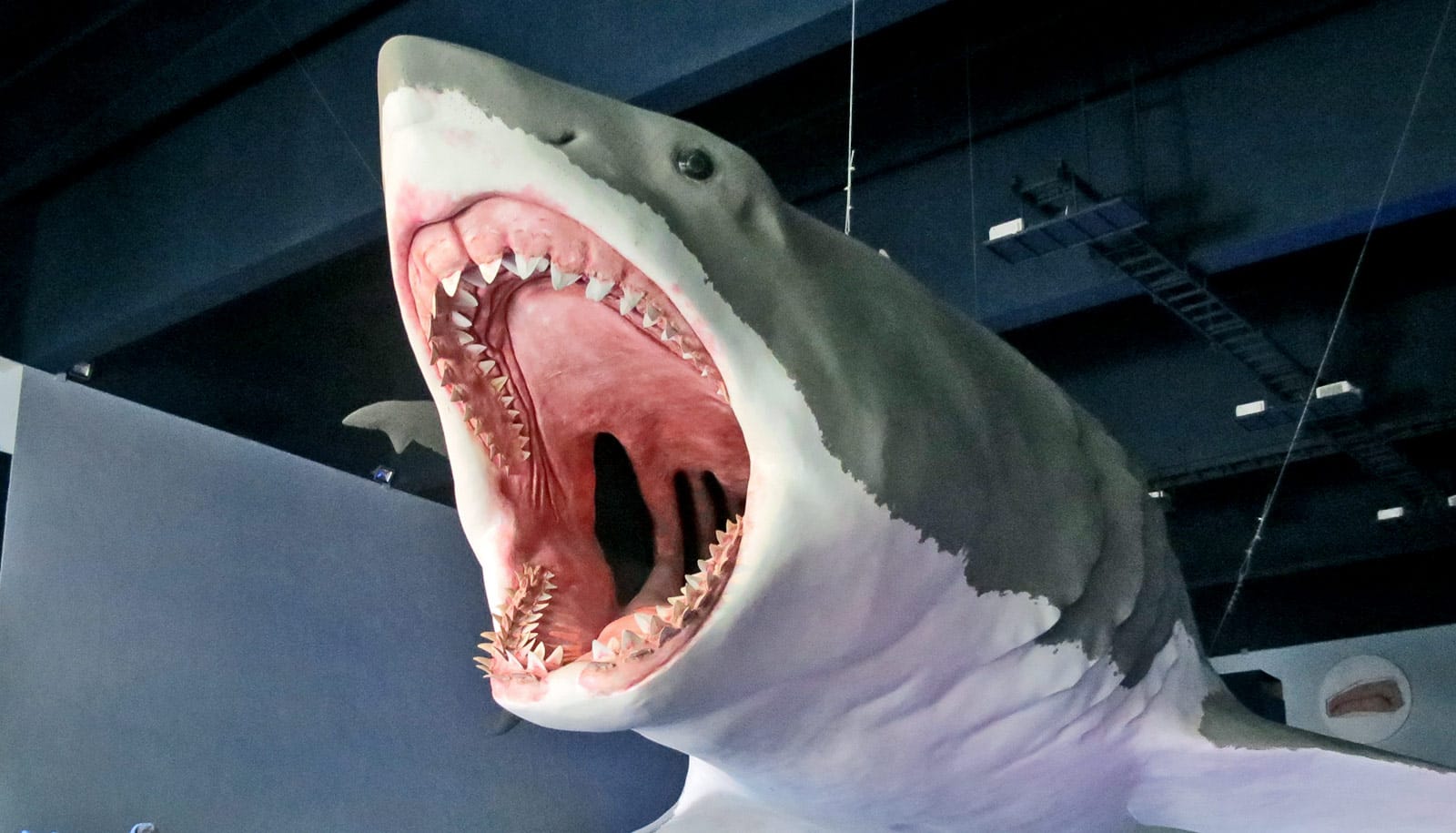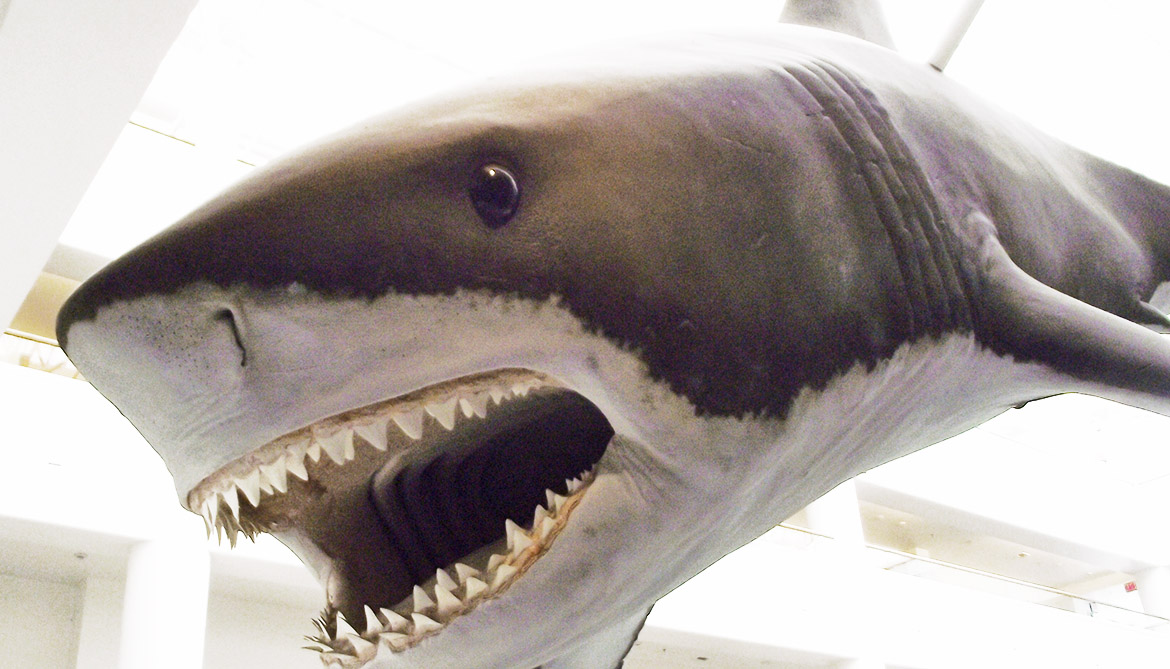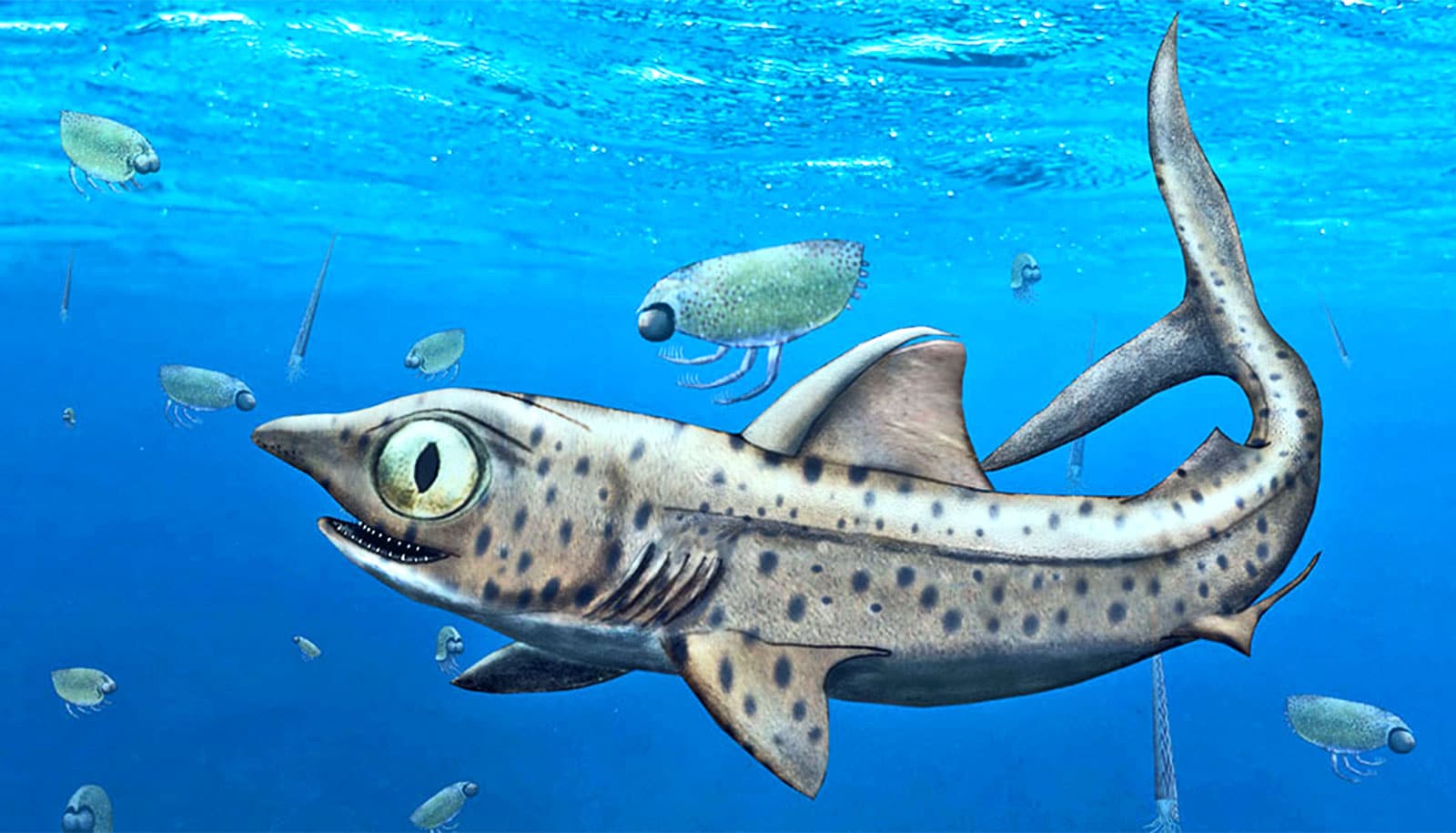Researchers examined a deformed tooth from an Otodus megalodon, the world’s largest prehistoric shark, to find out what caused it: was it developmental or related to feeding?
The work could give paleontologists more insight into the developmental processes associated with tooth injury in ancient sharks, as well as feeding behavior.
“We tend to reserve our sympathy for the prey, but the life of a predator, even a gigantic megatooth shark, was no cakewalk either.”
At issue is an abnormality referred to as double tooth pathology, in which a single tooth appears “split.” There are several possible causes: during tooth development two tooth buds can fuse into one or one tooth bud can split into two (a process called gemination). Disease, genetics, or physical injury to the tooth bud can cause gemination and fusion.
“We don’t have a lot of data on double tooth pathologies in ancient shark species,” says Harrison Miller, a former undergraduate student at North Carolina University and corresponding author of the paper in PeerJ. “So this was an opportunity to fill in those gaps—and perhaps learn more about the sharks in the process.”
The researchers examined three abnormal teeth: one 4-inch tooth from O. megalodon, an apex predator the size of a school bus that ruled the seas in the Miocene and early Pliocene periods (from 11 to 3.7 million years ago); and two from Carcharhinus leucas, a much smaller bull shark species that lived during the same period and still roams the seas today.
All three oddly-shaped teeth displayed a form of double tooth pathology. The researchers compared the teeth to normal teeth from both species and performed nano-CT imaging of the deformed teeth so that they could examine what was going on inside.
While the pathological teeth did have more internal canals than normal teeth—confirming either the incomplete splitting or joining of two teeth during development—the researchers were unable to definitively establish a developmental cause.
“Part of the difficulty was in applying terminology from work in humans and other mammals to sharks,” says coauthor Haviv Avrahami, a doctoral student.
“Sharks have cartilaginous skeletons, not bony skeletons, so preservation of their jaws is rare in the fossil record, and usually, we only find the individual isolated teeth. Additionally, sharks have different mechanisms for tooth development—they have continuous tooth replacement, so you can’t look at what is happening in the rest of the jaw to rule out fusion or gemination.”
Given what the researchers know about this kind of pathology in modern shark teeth, however, they lean toward feeding-related injury as a more probable cause.
“With O. megalodon in particular, the current understanding is that they fed mostly on whales,” Avrahami says. “But we know that tooth deformities in modern sharks can be caused by something sharp piercing the conveyor belt of developing teeth inside the mouth.
“Based on what we see in modern sharks, the injury was most likely caused by chomping down on a spiny fish or taking a nasty stab from a stingray barb.”
“We also know that O. megalodon had nesting grounds around Panama, and that relatives of modern stingray species also inhabited that area,” Miller says. “And these spines can get very thick. So a tooth injury of this type could indicate that O. megalodon was more of a generalist predator—and that this O. megalodon in particular just had a bad day.”
Lindsay Zanno, associate research professor, head of paleontology at the North Carolina Museum of Natural Sciences, and coauthor of the research, agrees.
“When we think of predator-prey encounters, we tend to reserve our sympathy for the prey, but the life of a predator, even a gigantic megatooth shark, was no cakewalk either,” Zanno says.
Mark Kostich donated the pathological O. megalodon tooth to the Paleontological Collections of the North Carolina Museum of Natural Sciences.
Source: NC State


